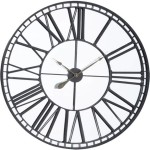How To Install a Bathroom Vanity Mirror
Installing a bathroom vanity mirror is a relatively straightforward home improvement project that can significantly enhance the aesthetic and functionality of a bathroom. A new mirror can brighten the space and provide a clearer reflection. Whether replacing an existing mirror or installing one in a new bathroom, the process involves careful planning, accurate measurements, and the correct tools and materials.
1. Gathering Necessary Tools and Materials
Before beginning, ensure all necessary tools and materials are readily available. This preparation will streamline the installation process and minimize interruptions. Required items typically include a measuring tape, a pencil, a level, safety glasses, a drill with appropriate drill bits (including any specialized bits for specific wall types), wall anchors (if needed), screws, a screwdriver, and the chosen mirror.
2. Preparing the Wall Surface
Proper wall preparation is crucial for secure and stable mirror installation. The wall surface must be clean, dry, and free of any loose debris. If the wall has existing holes or imperfections, these should be filled and sanded smooth. For walls prone to moisture, applying a sealant can help protect the wall and enhance the mirror's longevity.
3. Measuring and Marking Mirror Placement
Accurate measurements are essential for ensuring the mirror is positioned correctly. Using a measuring tape, determine the desired height and width of the mirror placement. The center of the mirror should typically be at eye level. Mark the desired location on the wall with a pencil, using a level to ensure the markings are perfectly horizontal and vertical. These markings will serve as guides for installation.
4. Installing Wall Anchors (If Necessary)
Depending on the wall type and the weight of the mirror, wall anchors may be required to provide additional support. If installing the mirror onto drywall, especially with heavier mirrors, wall anchors are highly recommended. Drill pilot holes at the marked locations and insert the appropriate wall anchors. Ensure the anchors are flush with the wall surface. For tile or other solid surfaces, anchors might not be necessary, but using appropriate screws and ensuring they are driven into studs or solid backing is vital.
5. Attaching the Mirror Clips or Brackets
Many mirrors come with pre-attached clips or brackets. If the mirror does not have these, they must be purchased separately and attached according to the manufacturer’s instructions. Align the clips or brackets with the marked locations on the wall and secure them using the appropriate screws. Ensure the clips or brackets are securely fastened to provide adequate support for the mirror.
6. Mounting the Mirror
Carefully lift the mirror and position it onto the installed clips or brackets. Ensure the mirror is seated correctly and securely within the clips or brackets. Some mirrors have a locking mechanism that needs to be engaged after placement. Carefully inspect the mirror to ensure it is level and securely mounted. Gently tug on the mirror to confirm its stability.
7. Applying Mirror Adhesive (Optional)
For added security and stability, particularly with heavier mirrors, applying mirror adhesive is recommended. This adhesive can help prevent the mirror from shifting or vibrating. Follow the manufacturer’s instructions for applying the adhesive. Ensure the adhesive is compatible with the mirror and the wall surface. Allow adequate drying time before using the bathroom.
8. Sealing the Edges (Optional)
Sealing the edges of the mirror where it meets the wall with a clear silicone sealant can further protect against moisture damage and enhance the overall finished look. This is particularly important in humid environments. Apply a thin bead of sealant and smooth it with a caulk tool or a damp finger for a clean, professional finish. Allow the sealant to dry completely before using the bathroom.
Following these steps will contribute to a successful mirror installation. Always consult the manufacturer's instructions for the specific mirror and hardware being used. If there are any doubts or concerns about the installation process, consulting a qualified professional is always recommended.

Install A Recessed Vanity Mirror

How To Install A Bathroom Vanity Mirror Light

Guide To Hanging Bathroom Vanity Lighting And Mirrors Liven Design

How To Pick And Hang The Perfect Bathroom Mirror Roomhints

How To Install A Mirror Without Frame Merrypad

How To Install A Mirrorchic Bathroom Mirror Frame Momhomeguide Com

Guide To Hanging Bathroom Vanity Lighting And Mirrors Liven Design
Bathroom Design Quick Tip Where To Place The Mirror When Your Sink Is Off Center Designed

Install A Recessed Vanity Mirror

Guide To Hanging Bathroom Vanity Lighting And Mirrors Liven Design








